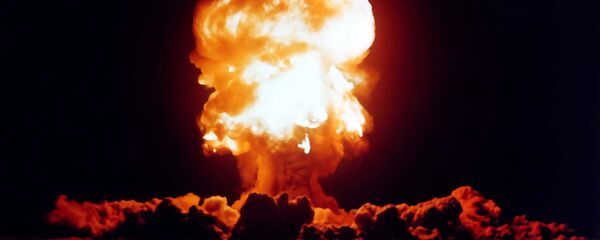Publicly available information shows that North Korea has almost all the components needed to produce a three-stage ICBM and a multistage launch system to deliver heavy payloads into space, he said.
"Pyongyang is on the verge of becoming a major aerospace power, physically capable of reaching its adversaries on another continent and deploying its own orbit group. If the speed acquired in recent years remains the same, this will happen in the next five years," the analyst warned.
Until 2012, there were virtually no signs that North Korea was close to developing a ballistic missile capable of travelling thousands of kilometers. On April 15, 2012, Pyongyang unveiled six three-stage missiles designated as Hwaseong-13 at home and KN-08 in the West. Three years later the North showcased another version of Hwaseong-13 which foreign analysts dubbed KN-14.
In March 2016, the world managed to take a sneak peek of North Korea's missile program when Pyongyang published several photos of Kim Jong-un meeting with experts on nuclear weapons and their methods of delivery. The images showed a mockup of a nuclear weapon, the dissembled KN-08 and KN-14, as well as elements of their engine systems.
Later that month, Pyongyang reported that it successfully tested heat insulation for the warhead of an ICBM under development. This, according to Khrustalev, is one of the key issues when it comes to building battle-ready long-range missiles. In April, the North announced that it successfully tested the engine for the new ICBM.
"Combined with successful tests of the single stage Hwaseong-10, which is technologically quite similar to the Soviet R-27 Zyb (structural materials, fuel, engines), this indicates that North Korea is developing a multistage ICBM using same technologies," the analyst said.
Khrustalev noted that although no information is available on the exact composition of the KN-08 and KN-14, experts agree that Pyongyang is capable of developing a multistage ICBM on these platforms using Hwaseong-10's technological base.
The North Korean missile program goes beyond military tasks.
"There is a rather ambitious space program," Khrustalev said. "Analysts have often dismissed it as a fantasy, but reality begs to differ."
On September 20, 2016, Pyongyang unveiled a new large rocket engine that reportedly had a thrust of 80 tons. The news prompted the analyst to say that North Korea has a "powerful construction set to build different booster vehicles." If so, Pyongyang will be able to deliver low orbit heavy satellites.



